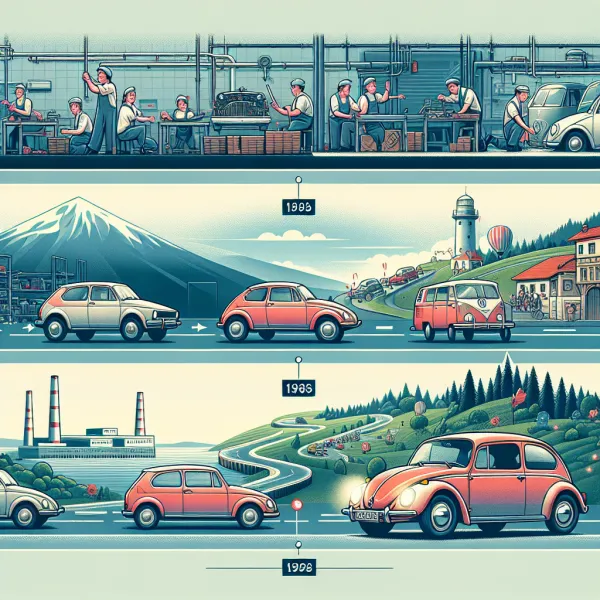The Iconic Volkswagen Rabbit: A Compact Car That Changed the Game
The Iconic Volkswagen Rabbit: A Compact Car That Changed the Game
The Volkswagen Rabbit, known as the Volkswagen Golf in most parts of the world, is a car that has left an indelible mark on the automotive industry. First introduced in 1974, this compact car quickly became a favorite for its practicality, efficiency, and innovative design. In the United States, it was marketed as the Rabbit, a name that evokes agility and charm, perfectly reflecting the car's character.
A Brief History of the Volkswagen Rabbit
The Rabbit made its debut in the U.S. in 1975 as a replacement for the iconic Volkswagen Beetle. Designed by the legendary Giorgetto Giugiaro, the Rabbit was a front-wheel-drive hatchback that offered a modern alternative to the rear-engine, rear-wheel-drive Beetle. Its boxy yet stylish design, combined with its compact size, made it an instant hit among urban drivers.
One of the Rabbit's most notable features was its fuel efficiency, which was a significant selling point during the 1970s oil crisis. The car's lightweight construction and efficient engines made it an economical choice for budget-conscious consumers.
Design and Features
The Volkswagen Rabbit was designed with practicality in mind. Its hatchback design provided ample cargo space, making it versatile for both city commutes and weekend getaways. The interior was simple yet functional, with a focus on driver comfort and ease of use.
Over the years, the Rabbit evolved to include more advanced features, such as fuel injection, improved suspension systems, and even sporty GTI versions that appealed to performance enthusiasts. The GTI, in particular, became a cult favorite, offering a perfect blend of practicality and driving excitement.
Cultural Impact
The Volkswagen Rabbit was more than just a car; it was a cultural icon. It represented a shift towards smaller, more efficient vehicles in an era dominated by large gas-guzzling cars. Its affordability and reliability made it accessible to a wide range of drivers, from college students to young families.
The Rabbit was a car that truly democratized driving, offering a high-quality vehicle at an affordable price.
In addition to its practical appeal, the Rabbit also gained a reputation as a fun and quirky car. Its playful name and distinctive design made it stand out on the road, and it quickly became a favorite among car enthusiasts and casual drivers alike.
The Rabbit Today
While the Rabbit name was eventually retired in favor of the Golf moniker in the U.S., its legacy lives on. The modern Volkswagen Golf continues to embody the same principles that made the Rabbit a success: practicality, efficiency, and a touch of fun. Vintage Rabbit models are now sought after by collectors and enthusiasts, serving as a reminder of a time when compact cars were redefining the automotive landscape.
Conclusion
The Volkswagen Rabbit was more than just a car; it was a revolution on wheels. Its innovative design, fuel efficiency, and cultural significance have cemented its place in automotive history. Whether you're a fan of vintage cars or simply appreciate a well-designed vehicle, the Rabbit remains a symbol of ingenuity and practicality.
